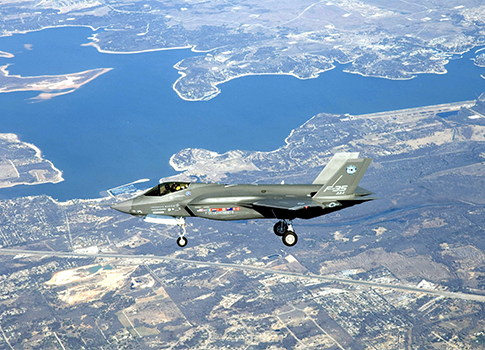The last hurdles were cleared this week in a major arms deal for the sale of the F-35 Joint Strike Fighter to Israel. The final negotiations of the agreement, originally approved in 2008 and signed in 2010, concerned the integration of Israeli-designed electronic warfare systems in the U.S.-produced aircraft.
The $207 million Lockheed Martin contract announced yesterday finalizes a larger $400 million agreement signed earlier this month for electronic warfare development and integration into Israel's initial $2.75 billion order of 19 fighters, slated for delivery in 2016. The deal also includes an option for Israel to purchase an additional 75 of the multi-role stealth fighters.
"This agreement kicks off the Israeli program," a source told Reuters.
The Israelis have insisted on the ability to integrate their own electronic warfare systems into the aircraft, a technology in which the Jewish state is a world leader. Israeli military planners are concerned that the F-35's stealth capabilities will need to be bolstered in coming years by new technologies as more militaries develop stealth-defeating radar systems.
An Israeli air force official told Aviation Week, "We think the stealth protection will be good for 5-10 years, but the aircraft will be in service for 30-40 years, so we need EW [electronic warfare] capabilities that can be rapidly improved."
The technologies developed by Israel for its foreign-procured arms platforms are often supplied to allies like the United States. For example, the LITENING targeting pod, currently employed on a range of U.S. military aircraft including the F-16, F-15, F-18, and A-10, was developed in Israel.
It is expected that the electronic warfare systems Israel develops for the F-35, including radio and datalink systems, will help keep the fighter maintain its edge as the benefits of its stealth technology are reduced by advances in radar. As reported by Aviation Week, "China, India and Russia are already finding weaknesses in stealth as they develop it for their own advanced strike aircraft."
